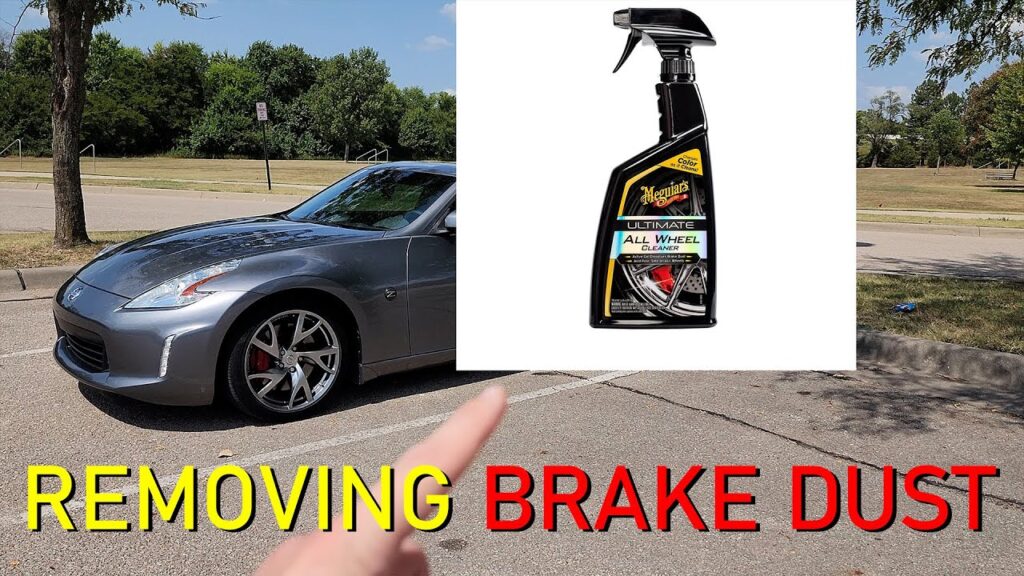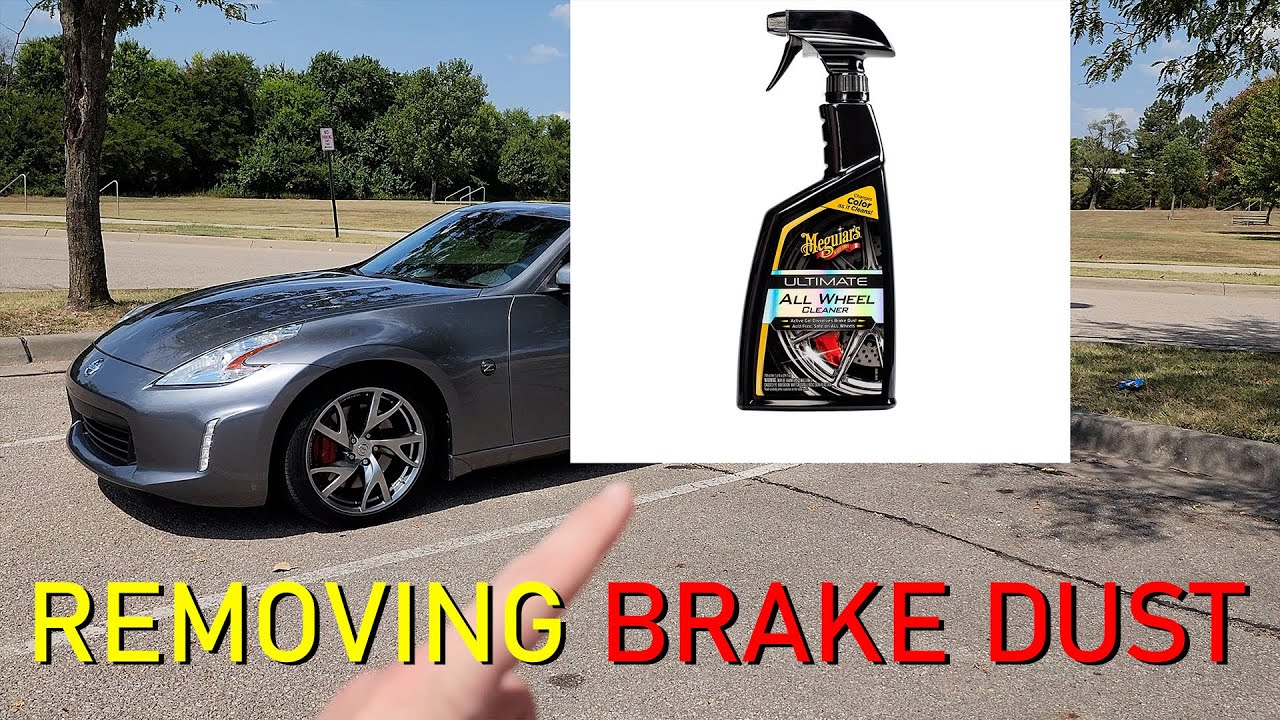
The Definitive Guide to Removing Brake Dust: Keep Your Wheels Sparkling
Brake dust. It’s the bane of every car enthusiast’s existence. That unsightly, gritty film that coats your wheels, diminishing their shine and making your ride look unkempt. But what exactly *is* brake dust, and more importantly, how do you effectively tackle removing brake dust to maintain the pristine appearance of your vehicle? This comprehensive guide will walk you through everything you need to know, from understanding the composition of brake dust to choosing the right cleaning products and techniques. We’ll even delve into preventative measures to minimize future buildup. So, if you’re tired of battling brake dust, read on to discover the secrets to spotless wheels.
Understanding Brake Dust
To effectively combat brake dust, it’s crucial to understand its origins and composition. Brake dust is primarily composed of two key elements: particles from the brake pads and particles from the brake rotors. As you apply the brakes, friction between these two components causes them to wear down, releasing tiny particles into the air. These particles then settle on the nearest surface, which is often your wheels.
Composition of Brake Dust
- Brake Pad Material: Brake pads are made from various materials, including semi-metallic, organic, and ceramic compounds. Semi-metallic pads tend to produce more dust than organic or ceramic pads.
- Rotor Material: Brake rotors are typically made of cast iron. As they wear down, they contribute to the metallic component of brake dust.
- Environmental Contaminants: Brake dust can also incorporate environmental contaminants like road grime, dirt, and pollutants, further contributing to its stubborn nature.
Why is Brake Dust So Harmful?
Beyond its aesthetic impact, brake dust can cause several problems if left unaddressed:
- Corrosion: Brake dust is often corrosive and can damage the finish on your wheels over time, leading to pitting and discoloration.
- Wheel Damage: The abrasive nature of brake dust can scratch and dull the surface of your wheels.
- Reduced Braking Performance: Excessive brake dust buildup can potentially interfere with the proper function of your brakes, although this is less common with modern braking systems.
Choosing the Right Cleaning Products for Removing Brake Dust
Selecting the appropriate cleaning products is essential for effectively removing brake dust without damaging your wheels. There are various options available, each with its own strengths and weaknesses.
Types of Wheel Cleaners
- Acid-Based Cleaners: These are powerful cleaners that can quickly dissolve brake dust and grime. However, they are also highly corrosive and can damage certain wheel finishes, particularly aluminum and painted wheels. Use with extreme caution and always test in an inconspicuous area first.
- Alkaline-Based Cleaners: These are less aggressive than acid-based cleaners but still effective at removing brake dust. They are generally safer for most wheel finishes but may require more dwell time and agitation.
- pH-Neutral Cleaners: These are the safest option for delicate wheel finishes and are less likely to cause damage. However, they may not be as effective at removing heavy brake dust buildup and may require multiple applications.
- Iron Removers: These specialized cleaners contain chemicals that react with iron particles in brake dust, causing them to dissolve and turn purple. They are very effective at removing embedded brake dust and are generally safe for most wheel finishes.
Factors to Consider When Choosing a Cleaner
- Wheel Finish: Consider the finish of your wheels (e.g., chrome, aluminum, painted, clear-coated) and choose a cleaner that is specifically formulated for that type of finish.
- Severity of Brake Dust: If you have heavy brake dust buildup, you may need a more aggressive cleaner. For light dust, a pH-neutral cleaner may suffice.
- Personal Preference: Some people prefer spray-on cleaners, while others prefer gels or foams. Choose a product that you find easy to use.
Step-by-Step Guide: Removing Brake Dust Like a Pro
Now that you understand brake dust and have chosen the right cleaning products, let’s walk through the process of removing brake dust step by step.
Materials You’ll Need
- Wheel cleaner
- Wheel brushes (various sizes)
- Microfiber towels
- Garden hose or pressure washer
- Bucket of clean water
- Gloves
- Eye protection
The Cleaning Process
- Preparation: Park your car in a shaded area and allow the wheels to cool down completely. This will prevent the cleaner from drying too quickly.
- Rinse: Rinse the wheels thoroughly with water to remove loose dirt and debris.
- Apply Cleaner: Apply the wheel cleaner according to the manufacturer’s instructions. Be sure to coat all surfaces of the wheel, including the barrel and lug nut areas.
- Dwell Time: Allow the cleaner to dwell for the recommended time. This will give it time to dissolve the brake dust.
- Agitate: Use a wheel brush to agitate the cleaner and loosen the brake dust. Pay particular attention to areas with heavy buildup. Use different sized brushes to reach all areas of the wheel.
- Rinse Again: Rinse the wheels thoroughly with water to remove all traces of the cleaner and brake dust.
- Dry: Dry the wheels with a clean microfiber towel. This will prevent water spots and streaks.
- Inspect: Inspect the wheels for any remaining brake dust. If necessary, repeat the cleaning process.
- Protect (Optional): Apply a wheel sealant or wax to protect the wheels from future brake dust buildup.
Preventative Measures: Minimizing Brake Dust Buildup
While regular cleaning is essential, taking preventative measures can significantly reduce brake dust buildup and make your life easier. Here are some tips:
Upgrade Your Brake Pads
Consider switching to low-dust brake pads, such as ceramic or organic pads. These pads produce significantly less dust than semi-metallic pads. While they might be slightly more expensive, the reduced brake dust and extended wheel cleanliness make them a worthwhile investment. [See also: Brake Pad Material Comparison]
Apply Wheel Sealant or Wax
Applying a wheel sealant or wax creates a protective barrier on the surface of your wheels, making it more difficult for brake dust to adhere. This makes cleaning easier and helps to prevent corrosion and damage. Reapply sealant or wax every few months for optimal protection. [See also: Best Wheel Sealants of 2024]
Regular Cleaning
The more frequently you clean your wheels, the less brake dust will accumulate. Aim to clean your wheels every one to two weeks, depending on your driving conditions and the amount of brake dust your car produces.
Advanced Techniques for Stubborn Brake Dust Removal
Sometimes, despite your best efforts, brake dust can be incredibly stubborn and difficult to remove. In these cases, you may need to resort to more advanced techniques.
Clay Bar Treatment
A clay bar can be used to remove embedded brake dust and contaminants from the surface of your wheels. Clay bars work by gently lifting contaminants from the pores of the wheel finish. Use a clay bar lubricant to prevent scratching. [See also: How to Use a Clay Bar on Wheels]
Polishing
If your wheels have minor scratches or imperfections caused by brake dust, you can use a wheel polish to restore their shine. Use a polishing compound specifically designed for your wheel finish and follow the manufacturer’s instructions. [See also: Wheel Polishing Guide]
Professional Detailing
For heavily damaged or severely contaminated wheels, it may be best to seek professional detailing services. A professional detailer has the tools and expertise to safely and effectively remove brake dust and restore your wheels to their original condition.
Conclusion: Sparkling Wheels are Within Reach
Removing brake dust doesn’t have to be a daunting task. By understanding the nature of brake dust, choosing the right cleaning products, following a systematic cleaning process, and implementing preventative measures, you can keep your wheels sparkling and maintain the overall appearance of your vehicle. So, grab your cleaning supplies and get ready to say goodbye to brake dust forever!
Remember to always prioritize safety by wearing gloves and eye protection when working with cleaning chemicals. Also, consult your vehicle’s owner’s manual or a professional detailer if you have any concerns about cleaning your wheels.

